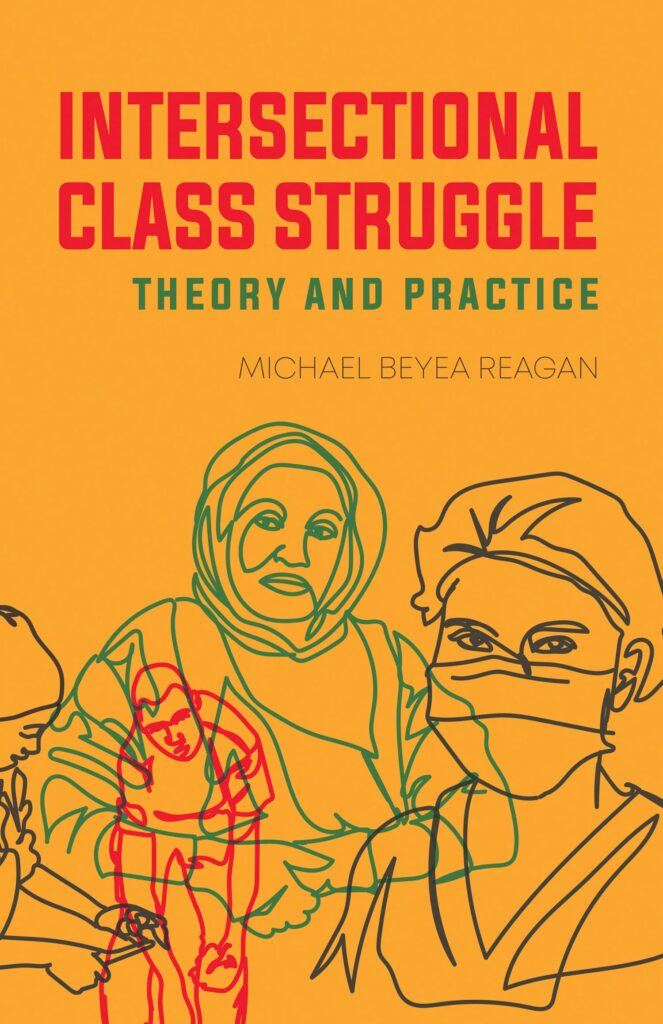
Michael Beyea Reagan is the author of Intersectional Class Struggle: Theory and Practice, which explores the influence of race and gender on working-class politics. Industrial Worker recently spoke with Reagan about the value that an intersectional perspective can bring to union organizing. The interview below has been edited for clarity and length.
Industrial Worker: Why study class struggle as intersectional?
Michael Beyea Reagan: Class is intersectional. Whenever I talk with a coworker about organizing, their main concerns are about how the job impacts their personal lives, their families, their time and things like that. That includes economic, but also personal, social and political aspects of our work lives.
Labor markets are tiered to segregate and categorize our labor. Those tiers are defined by race and gender: immigrants in service or agricultural work, women in “pink collar” jobs and so on. The conditions and experiences we have working are shaped by the social factors of racism and patriarchy, as well as the economic forces of capitalism.
Race, class and gender are fused in our experiences and how the structure of power operates. Borrowing from Karl Marx, I call this a “social totality,” and we should not only study it, but organize against it.
How do class politics influence anti-capitalist struggle?
Class politics have defined anti-capitalist struggle for a very long time — so much so that when we think about anti-capitalist struggle, we often think exclusively of class, labor, economics and the like.
Capitalism requires the exploitation of labor for profits, but that is only part of the picture. Capitalism has never existed without racism dividing workers, patriarchy devaluing women and their work, imperialism conquering new peoples and markets, or the unceasing depletion of natural resources. Thus, we should try to understand capitalism as an intersection of all these factors, or a totality.
Yes, profits come from exploiting workers, but they also come from “primitive accumulation” of unpaid women’s labor, seizing resources like rich earth minerals from nature or the incalculable costs of carbon emissions. In a racially divided workforce, workers are easier to exploit because they undercut each other’s value, but they can also be turned against each other socially and politically.
Capitalism exists by doing all of that work simultaneously, and our struggle against it needs to take this into account. If our politics are limited to a “class first” position, we miss all the other ways we are being exploited, and we make it harder to build solidarity with people who are also struggling against the pernicious impacts of capitalism in their communities.
Why should workers be aware of how culture and class struggle are not wholly determined by economic realities?
In the textile industry in the 1820s, capitalists needed a lot of laborers, more than what was available from men alone. They turned to women for the same reason employers always chase labor: They were cheap. Women in the 19th century were generally restricted to only two main avenues of employment: school teacher or domestic worker. There were a lot of women workers without many places to sell their labor, and so their labor was cheap.
But why were women prevented from having other professions and a bigger social role? This is mostly a cultural tradition of patriarchy, where women were devalued. Women were restricted in their social participation and relegated to the “domestic sphere.” This created the conditions for low wages for women workers. Patriarchy and capitalism were fused by social divisions and low wages.
Similarly, with racialized labor or other forms of devalued labor and people, cultural values can produce material impacts. Both cultural and material factors contribute to worker exploitation, and we have to take both into account in our organizing.
How do workplace power and direct action tactics build popular power?
The final section of my book talks about contemporary struggles and how the power workers have in the workplace will remain central to working-class struggle and anti-capitalist struggle deep into the foreseeable future.
In the Arab Spring in Egypt, as demonstrators occupied Tahrir Square to end the dictatorship of Hosni Mubarak, they didn’t have the power to actually drive him from office. But when port workers at the Suez Canal, textile workers in the industrial north, telecom workers and others all walked off the job, they actually had the leverage to force Mubarak out of office and complete a regime change.
This summer in Colombia, workers staged a general strike against new taxes and other cost increases on regular working people. It wasn’t until they had a national strike that they had the power to force government officials to resign and the hated law to be withdrawn.
This is the power that we carry with us into our workplaces every day. If we develop our practices of solidarity and organize our labor for our own interests, rather than for the bosses, there is no more powerful social force.
